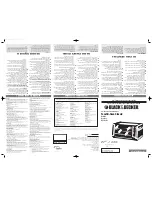
121
Service history
The operational and fault history (total amount and since the last service) of the boiler can be retrieved with the help
of a computer, correct software and an interface cable. This information can be used to specify the maintenance and
service proceedings in relation to the boiler(parts).
Water leakage
The water pressure of the heating installation should be more than 1,0 bar and at a maximum of 2,0 bar at normal
operation. When the water pressure drops below the minimum occasionally, there might be a water leak. Check the
boiler and the complete heating installation for any water leakages and have these repaired.
Flue gas & air supply
The flue gas pipes and the air supply pipes must be checked for gas tightness. Also check if the mounting of these
pipes is correct, safe and not damaged. Check the rooftop of the boiler housing for signs of water leakage and traces
of water coming from the air supply pipe, the air vent or any condensate coming from the flue gas pipes.
Gas supply & safeties
The gas pipes must be checked for gas tightness. Also check if the mounting of these pipes is correct, safe and not
damaged. Any built-in safeties should be checked for a correct functioning.
Remove the burner unit
The burner unit consists of the burner plate, the burner nose
and the internal burner. To remove this part for an
internal heat exchanger check: remove the six M6 nuts, the nuts that connect the burner nose to the non-return valve
and the ignition cable. After this take out the burner unit by moving it forward out of the boiler housing.
NOTICE: watch out not to damage the burner plate insulation during this operation.
Burner
Check the burner surface to see if it has damages, signs of rust and/or cracks. When the burner surface is damaged
the burner must be replaced. The burner can be cleaned by using a soft (non-metallic) brush. The dust can be
removed with a vacuum cleaner or pressurized air.
Ignition / ionisation electrode
When the complete burner is removed, it is also very easy to check the ignition electrode. First check if the distances
between the electrodes and between the electrode and the burner are according to the graph below. When these
are not correct, try to bend the electrodes in the right position. Notice: the electrodes undergo high temperatures,
therefore the electrodes become hard and are difficult to bend. While bending used electrodes they might break or
burst. Check the electrode, after bending, for any tear/crack and signs of rust. When they are burst/cracked or rusty,
replace the electrode. Also replace the electrode when there is a crack in the ceramic insulation of the electrode.
When the electrode is going to be replaced also the gasket should be renewed.
Burner door gaskets
When these gaskets have changed colours at some parts, the rubber has cured and/or is damaged, then these
gaskets must be replaced. Notice: only use the gaskets that are supplied by the boiler manufacturer.
D = 8
– 10 mm
D = 0.315
– 0.393 inch
D
3.5 mm / 0.14 inch
Point of view in next picture








































